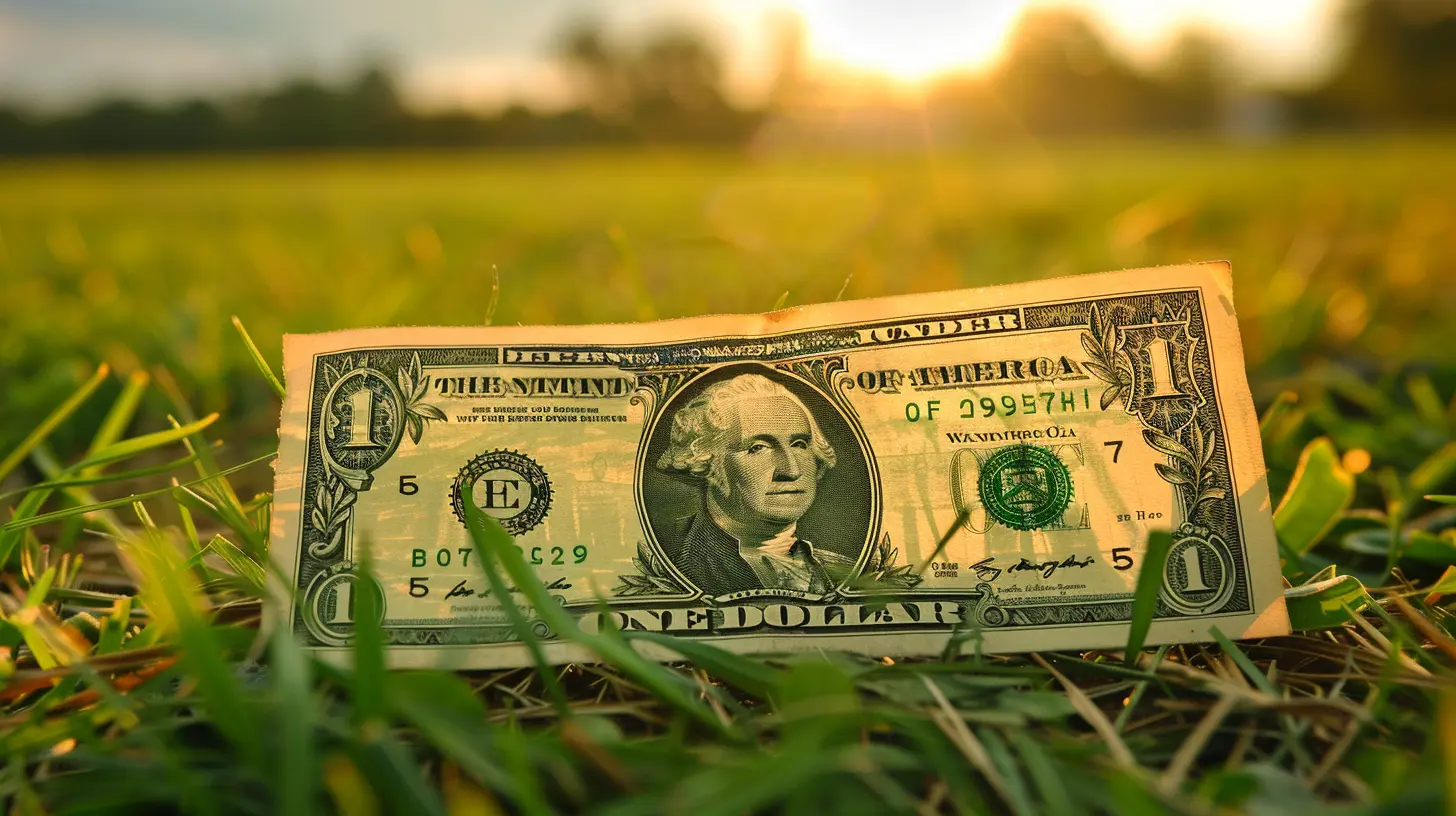The Role of Capital Gains in Retirement Planning
17 October 2025
Retirement planning... sounds like something for your future self, right? Maybe something to think about when you hit your 50s or (gasp!) 60s? Nope. The truth is, the earlier you dive into understanding how your money works for you, the smoother and more golden your golden years will be.
One major player in this financial game? Capital gains. Yep, those quiet little profits sneaking in after you sell an investment at a higher price than you paid. They can look boring on paper, but trust me—they’re retirement superheroes in disguise. Stick with me, and I’ll break it all down in plain English, with a sprinkle of humor and a whole lot of real-life relevance.
What Exactly Are Capital Gains?
Before we jump into the deep end, let’s get clear on what we’re talking about.A capital gain happens when you sell something—like stocks, mutual funds, real estate, or even collectible baseball cards—for more than you bought it. Think of it like flipping that vintage toy you found at a garage sale… only more strategic and way more profitable.
There are two flavors of capital gains:
- Short-term capital gains: These occur when you hold an asset for a year or less before selling. They’re taxed like your regular income—ouch.
- Long-term capital gains: These juicy gems come when you hold an asset for over a year. The tax rate? Usually much lower than your ordinary income tax rate. Score!
Now that we’ve got the basics, let’s talk about why capital gains should be your BFFs when planning for retirement.
Why Capital Gains Matter in Retirement Planning
1. They Help Your Money Work Harder
Here's the deal: putting your money in a high-yield savings account is great and all, but it’s not going to win any races. If you want to turbocharge your retirement savings, investing in assets that can appreciate over time is the way to go.Why? Because of compounding. Even modest capital gains reinvested over decades can snowball into a massive nest egg. It’s like rolling a snowball downhill—start small, and soon you’ve got an avalanche.
2. Tax Advantage = More Money in Your Pocket
Paying less in taxes legally? Yes, please!Long-term capital gains are typically taxed at rates ranging from 0% to 20%, depending on your income bracket. For most retirees, that can mean serious savings compared to regular income tax rates.
Here’s the kicker: with smart planning, some retirees qualify for the 0% long-term capital gains tax rate. Imagine making money from your investments and not paying taxes on it. Feels almost like cheating—but it's totally legit.
Capital Gains vs. Other Retirement Income Sources
Let’s stack it up:| Income Source | Tax Treatment | Growth Potential | Reliability |
|----------------------|-------------------------------------------|------------------|--------------------|
| Social Security | Taxed based on income | None | Steady |
| Pensions | Fully taxable | None | Fixed |
| Traditional 401(k)s | Taxed as ordinary income upon withdrawal | Market-based | Varies |
| Roth IRAs | Tax-free withdrawals | Market-based | Varies |
| Capital Gains | Taxed at lower rate or 0% (long-term) | High | Somewhat volatile |
Capital gains can be your flexible friend. They may not be as predictable as Social Security, but they can grow bigger and cost less in taxes.
Timing is Everything: Strategic Selling
Want to hear something cool? When you sell your investments matters… a lot.Let’s say you’re in retirement and your income is lower than when you were working full-time. That could drop you into a lower tax bracket—hello, lower capital gains taxes!
This is where strategies like tax-loss harvesting and gains harvesting come into play. Don’t worry, I’ll keep it simple:
- Tax-loss harvesting: You sell losing investments to offset the gains from winners, lowering your tax bill.
- Gains harvesting: In years when your income is low, you intentionally sell profitable assets to “harvest” the gain at a low (or even zero!) tax rate.
It’s like playing chess—but with your money. Smart moves now can save loads later.
Capital Gains and Tax-Advantaged Accounts
You’re probably thinking: “Okay, capital gains sound great… but where do I keep these magic money-makers?”Great question.
1. Taxable Brokerage Accounts
These are your capital gains playground. Any profits you make selling investments here get hit with capital gains tax. The good news? You’ve got flexibility. No required distributions, no age limits. You control when (and how much) you sell.2. Roth IRAs
Here’s where things get really spicy. Investments in a Roth grow tax-free AND you pay no taxes when you withdraw in retirement. That means capital gains inside a Roth are like unicorns—magical and untouchable by Uncle Sam.3. Traditional 401(k) or IRA
Heads up: profits here are taxed as regular income when withdrawn. So even though they technically have capital gains inside, for tax purposes, they’re treated differently. Useful to know for withdrawal strategies.Building a Capital Gains Strategy for Retirement
Let’s map it out together. You don’t need a finance degree or a Wall Street mentor. Just a plan.Step 1: Start Investing Early and Consistently
The earlier you get in the game, the better. Thanks to the magic of compounding, even small contributions can grow into something special with time. Don’t worry about catching the perfect moment—just start.Step 2: Hold 'Em
Want that long-term capital gains treatment? You’ve got to hold your assets for over a year. Reacting to every market dip and spike? That’s a fast track to short-term taxes and lost sleep.Be patient. Long-term investing isn’t flashy, but it’s powerful.
Step 3: Diversify with Growth in Mind
Not every investment grows the same way. Stocks typically have higher growth potential, which means bigger capital gains.But don’t put all your eggs in one basket. A good mix of stocks, ETFs, and even real estate can help balance growth and risk.
Step 4: Plan Your Withdrawals
In retirement, you’ll need to figure out how to turn those gains into income. That’s where a withdrawal strategy comes in.Tapping taxable accounts first? Saving Roth IRAs for later? There’s no one-size-fits-all, but taking capital gains into account helps you keep more of what you’ve earned.
Step 5: Work With a Pro (If You Need One)
There’s no shame in asking for help. A financial advisor, especially one who understands capital gains strategies, can be a game-changer. Just make sure they’re a fiduciary—they’re legally obligated to act in your best interest.Common Mistakes to Avoid
Even the savviest investors mess up sometimes. Let’s keep you ahead of the curve.- Selling too soon: That short-term gain may cost more than it’s worth.
- Ignoring taxes: Gains can feel good—until the IRS gets their cut. Plan ahead.
- Chasing trends: Investing in the “next big thing” can backfire. Focus on long-term value.
- Forgetting about inflation: Your capital gains need to outpace rising costs. Don’t leave them in cash forever.
Real-Life Example: Jane’s Retirement Wins
Let me introduce you to Jane. She started investing at 30, buying a handful of index funds in a taxable account. Nothing glamorous, just slow and steady.Fast forward to 65. Those funds have appreciated big time. Because Jane held them for decades, she qualifies for the long-term capital gains tax rate. And thanks to some low-income years in early retirement, she even sold some shares at a 0% tax rate.
Jane now uses her capital gains to supplement her Social Security and cover travel expenses (because who wants to stay home in retirement?). She didn’t get there overnight. She just played the long game—and capital gains played a big part.
Wrapping It Up: Capital Gains Aren’t Just for the Rich
You don’t need to be Warren Buffett to benefit from capital gains. With a little patience, some planning, and a dash of strategy, you can harness their power for your retirement too.If you’re still early on your journey—awesome, get started now. If you’re closer to retirement—no worries, it’s never too late to get smart with your investments.
Remember, every dollar you save in taxes is another dollar you can spend enjoying your life. So go ahead—let those capital gains give your retirement plan the glow-up it deserves.
all images in this post were generated using AI tools
Category:
Capital GainsAuthor:

Knight Barrett
Discussion
rate this article
1 comments
Bradley McGehee
This article brilliantly highlights the importance of capital gains in retirement planning. Understanding their impact on your portfolio can significantly enhance your financial security and long-term investment strategy. Great insights!
October 19, 2025 at 4:03 AM

Knight Barrett
Thank you for your thoughtful comment! I'm glad you found the insights on capital gains valuable for retirement planning.


